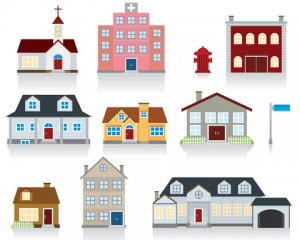Windows 101
How to choose your windows
We are here to make your window replacement experience simple and straightforward from initial consultation to project completion. Our expertise is at your disposal. We will educate you about the key considerations for choosing a window and ask questions to ensure you get the right window for your style and budget.
Here are the key areas for review and consideration.
Installation
This is the most important part of the project. There are three main installation methods:
› Replacement method
The inside components of the existing window are removed and the new window is inserted into the old frame. This is the least intrusive method.
› New Construction Method
The old window is completely removed down to the framing. The new window is fastened to the exterior sheathing with a flange and trimmed inside and out. This is the most intrusive method.
› Retro-fit Method
This is a combination of the other methods, less intrusive than New Construction and more intrusive that Replacement. Here the main goal is to retro-fit the new window into the existing frame so you don’t have to disturb the exterior water barrier.
The best window if installed improperly will cause major problems. Improper installation can allow water and air to penetrate in and around your window. Among other things this will lead to drafts, wall rot and impair the proper function of the locks.
Types
There are numerous things to consider when choosing your window type, most of which is subjective. Here are a few important areas:
› Function
Does the window fit the rooms adequate ventilation, privacy, egress and usage?
› Style
Does the new window match the house style?
› Maintenance
Does the new window fit your cleaning preferences?
Energy Efficiency
This is the most practical aspect of selecting a new window. The three areas that determine energy efficiency properties of a window are the frame, seal and glass.
› Frames
The primary materials are wood, vinyl, composite, fiberglass and aluminum. Of these aluminum is the least efficient because is readily conducts heat and cold. With the proper manufacturing and frame construction all of these material can be made to meet Energy Star ratings.
› Glass
The two most important contributions to the improved energy efficiency of glass are Low_E and double glazing. Low-E is clear coating applied to one side of the glass. The term Low_E stands for low emissivity. Emissivity is simply the measures of the surface’s ability to absorb or reflect radiant heat. The lower the rating the better in preventing heat loss. Double glazing is the use of two sheets of glass separated by an air space to improve insulation against heat transfer. Note many companies also offer triple glazing options for added energy efficiency.
› Seal
A spacer is inserted between the panes of glass and bonded to the glass with a primary and secondary seal to create and airtight seal between the two sheets of glass. The most common spacers are aluminum spacer bars, intercept spacers or warm edge spacers. To further improve the efficiency argon gas is injected into the space.
Window Options
› Grids
Grilles are a great way to add visual interest to a window. Colonial and Prairie are the two most common types. Custom rectangular patterns can be created to fit almost any design. Grids can be appended to the windows in several ways including; simulated divided lite(SDL), true divided lite(TDL), grids between glass(GBG), interior removable and exterior applied.
› Hardware
Window hardware is available in numerous finishes. The most popular finishes are white, brass, brushed nickel, oil rubbed bronze, polished chrome and antique brass. Aside from the standard lock and keeper hardware on a window there is other optional hardware such as lift bars, hand lift and finger lifts.
› Glass
Window glass is available decorative, obscure for privacy and tempered for safety.
› Interior Finishes
The are many options for the interior finish of a window and most manufactures offer at least five to ten color options. Vinyl although traditionally white can be painted, composite is factory colored through the material and wood is usually painted or varnished. Another common option is to have a manufactured wood grain added to the interior of a vinyl window.
› Exterior Finish
Low maintenance exteriors offer the best protection against the elements. Vinyl, Composite, Fiberglass and Aluminum all weather well on the exterior. Most wood windows these days have aluminum clad or pvc clad exteriors which come in multiple color options. Wood windows for the most traditional applications occasionally have wood exteriors and the important thing here is to protect the wood with adequate paint coverage every five to seven years.
Reliability
› Maintenance
For many homeowners easy cleaning tops the list of important considerations. Double hungs tilt-in units are the easiest to clean. Single hung, slider and casements are also easy to clean.
For proper function of operable windows choose a quality manufacturer. The operational hardware such as block and tackle system on double and single hungs, rollers on sliders and crank hardware on casements is extremely important.
› Warranty
The best indications of a quality manufacturer is to measure the strength of their product warranty. If a manufacturer knows they make a great product they will stand behind it with the warranty terms.

